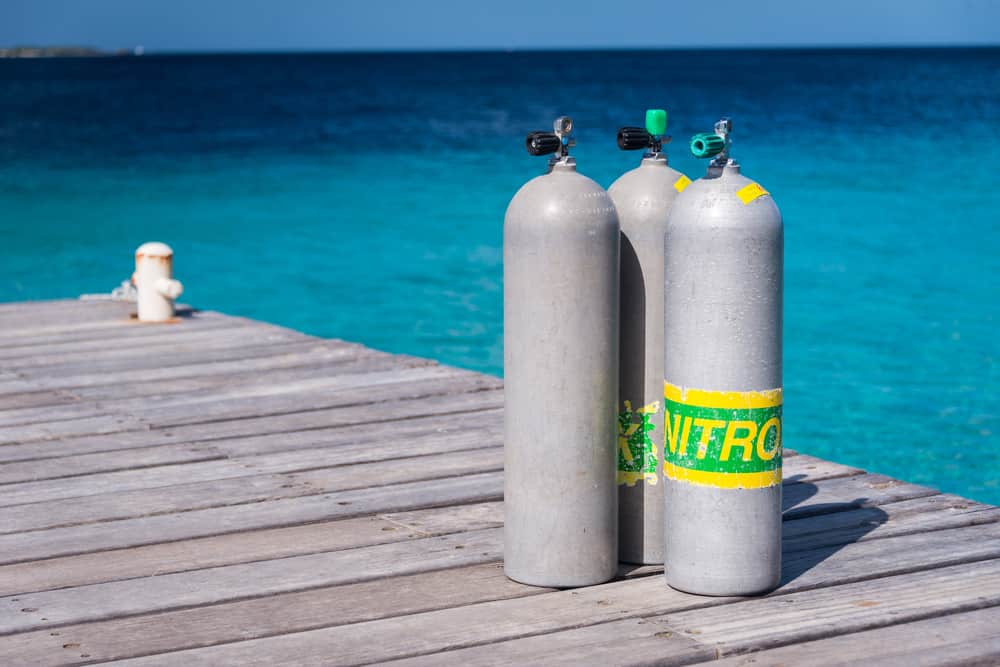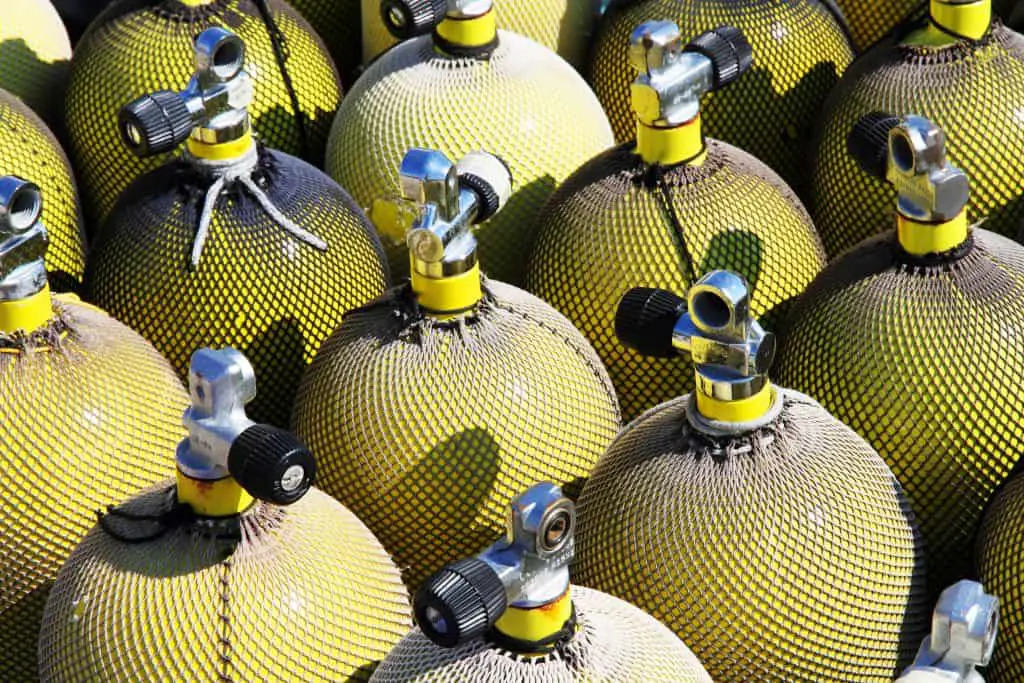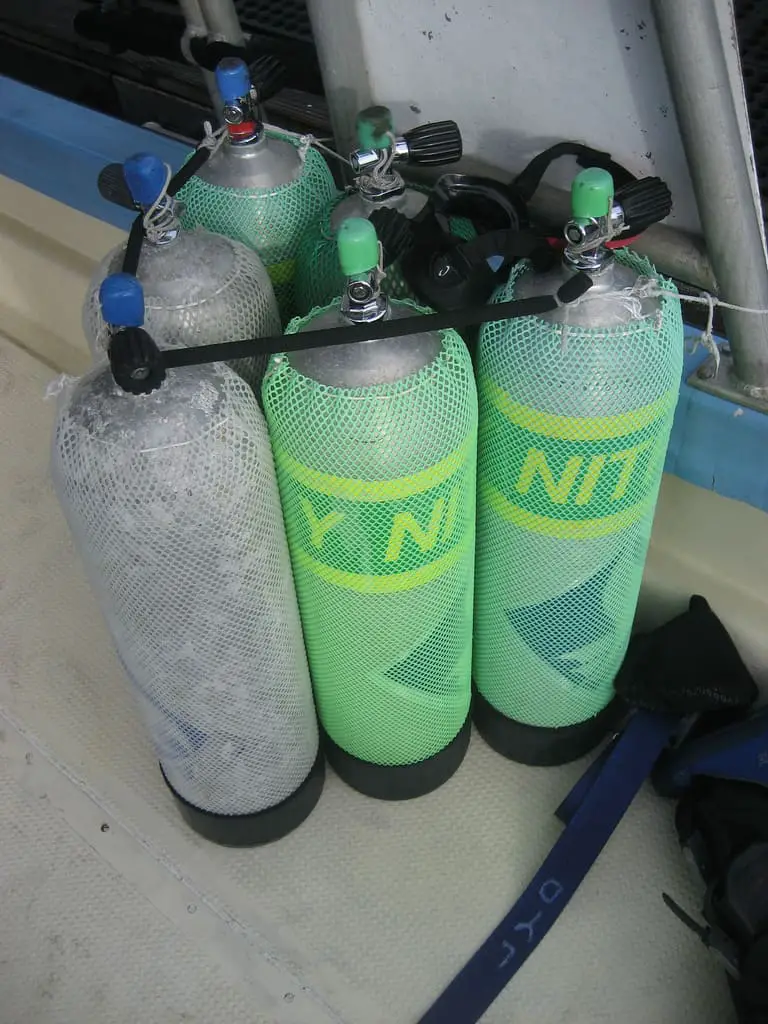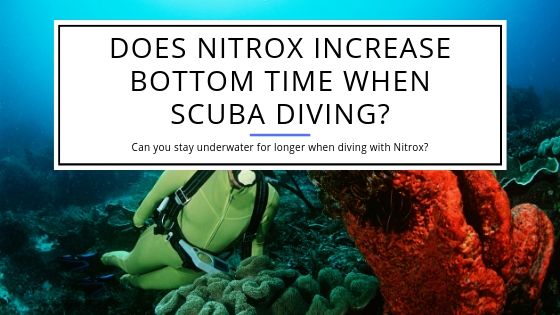Does Nitrox Increase Bottom Time When Scuba Diving?
When you’re deep diving, not only do you want to explore the bottom of the ocean some more, but it also takes time to return to the surface. Many people believe that making use of a Nitrox Tank when you dive can help you stay underwater for longer time periods. Others have this concept that Nitrox tanks are simply a means for you to use regular compressed air to increase bottom time.
Does Nitrox increase bottom time when scuba diving? Yes, Nitrox can increase bottom time when diving. However, it depends on a number of factors like depth, previous dives, etc. On average though you will be able to enjoy your underwater experience for a longer time for each dive.
When used correctly, Nitrox is a way to reduce decompression stress and help you spend some more time underwater. However, in order to use Nitrox you need to be trained and certified to avoid any mishaps. Here is everything you need to know about diving with nitrox.
What is Nitrox?
Nitrox is the term used for any breathing gas which has an oxygen concentration of more than around 20%. The oxygen content is increased to reduce the nitrogen concentration to increase the time spent at the bottom. This process aims to emulate the nitrogen concentration on land so divers can breathe more comfortably underwater.
The gas ratios may vary. For divers, the oxygen content usually falls within a range of 28-40%. Most divers opt for around 32-36% oxygen. You should always verify the oxygen concentration with the help of a nitrox analyzer!
Here are the two most common types of Nitrox popular among recreational deep divers:
- Nitrox 1: this has an oxygen concentration of 32% and a 68% nitrogen concentration.
- Nitrox 2: this one has 36% oxygen and 64% nitrogen.
Nitrox tanks are great for scuba diving to a moderate depth. However, if used without following the proper instructions, they can be dangerous when deep diving.
This stems from the fact that even though oxygen is a basic requirement for divers, it can be toxic in high pressure situations (the deeper you dive, the more the water pressure increases). This can lead to seizures, visual disturbances, ringing sounds in the ears, nausea and dizziness.

Understanding the Science Behind it
These disturbances are the result of excess oxygen in your bloodstream. The oxygen that isn’t used up by your body dissolves in your blood or combines with your hemoglobin. This prevents the hemoglobin from carrying carbon dioxide to your lungs. The buildup of gases obstructs the flow of blood to the brain. This leads to the aforementioned side effects.
It’s important to note that oxygen overdose isn’t a frequent occurrence, but if it does occur, it can be extremely dangerous. The blockage in the flow of blood can cause muscle spasms and may make it difficult for you to maintain control over your body. In extreme situations, it can lead to drowning.
Divers trained on how to use Nitrox are equipped with the right knowledge of how to deal with oxygen pressure at lower depths.
Important Factors to Consider
When dealing with oxygen pressure underwater, there are two main factors to consider:
- Oxygen concentration
- Time period of oxygen exposure
Both of these can be determined based on the oxygen pressure. This is known as the Partial Pressure of Oxygen or PPO2. The PPO2 value can be obtained using the following calculation:
PPO2= Fraction of Oxygen in the Tanks (FO2) * Pressure at Atmospheric Depth-Absolute (PATA)
Essentially, the deeper you go, the higher the value of the Partial Oxygen Pressure. The higher the PPO2, the less time a diver can spend at that depth.
On average, Nitrox Tanks with 32% oxygen can increase diver’s bottom time at depths of around 60-120 feet. However, this depth can vary based on the diver’s health, tolerance levels, water temperature and pressure.
Divers can withstand a PPO2 of around 1.6 for a maximum of forty-five minutes. Many divers believe that a lower PPO2 such as 1.4 is not as dangerous and can be withstood for longer time periods.
However, the amount of time spent underwater will have an impact on this value. A diver who spends more time at a lower PPO2 is likely to be affected the same way as a diver staying underwater at a higher PPO2 for a shorter time period.

How to Effectively Use a Nitrox Tank
Don’t get too freaked out by all these calculations and mathematical terms. Divers using Nitrox can make use of Nitrox tables or use a dive computer that is able to deal with Nitrox.
These Nitrox tables are similar to decompression tables in the sense that they define the amount of time a diver can spend at the bottom at the given oxygen concentration. Divers can also check their oxygen exposure for that particular dive.
For regular deep divers, Nitrox dive computers are a more convenient option than nitrox tables since they automatically display all the required details without you having to read through or calculate anything. However, it’s always a good idea to have a waterproof version of the Nitrox tables in case your dive computer malfunctions mid-dive.
Risks Associated with Nitrox Diving
- Nitrox tanks hold a large amount of flammable oxygen. Proper maintenance and care measures must be followed for the tank and its valves to avoid disasters.
- Staying underwater with a nitrox tank longer than the recommended time can cause asphyxiation, lung diseases and other problems and also poses a very strong danger of drowning.
Why Divers Want to Increase Bottom Time
For many scuba divers, especially those who don’t live by the sea, every dive is important. For divers who are on a scuba vacation, they want all their dives to last as long as possible. You don’t want to be close to seeing a 100-year-old turtle, only to find that you’ve reached your decompression limit and need to return to the surface.
Nitrox tanks add another cost to your diving experience, but they lower the nitrogen levels which are the main contributing factor to decompression sickness.

A Final Word on Nitrox Diving
Nitrox is ideal for recreational deep divers, but are not preferred for commercial use. For military and other commercial usage, blends such as Trimix and Heliox are used.
Diving with Nitrox tanks has benefits such as increased dive time, less exhaustion and effort during and after the dive, and a lower intake of nitrogen. However, nitrox diving has more risks associated with it than diving with compressed air.
This is why divers need to be certified to use Nitrox because they will learn how to manage oxygen exposure, keep an eye on the tank level, understand how to read dive tables and learn how to configure their dive computer to obtain reading for their Nitrox tank.
With the right precautionary measures, divers can have a better diving experience with nitrox without the dangers of breathing difficulties, nausea and other side effects associated with excessively compressed nitrox in the bloodstream.

